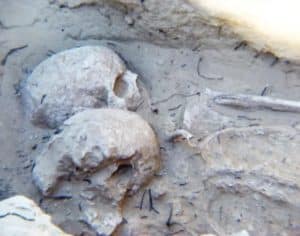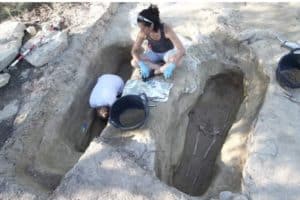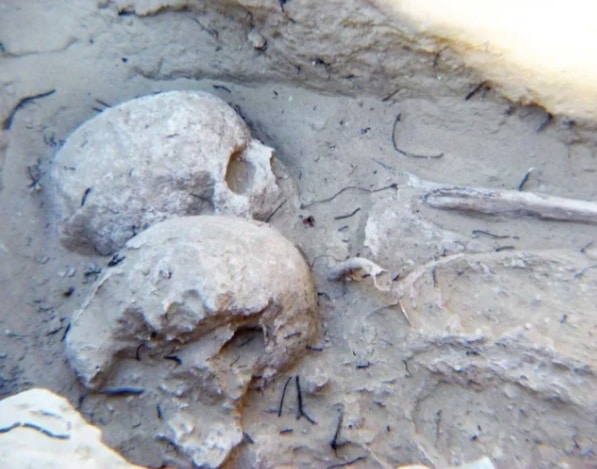
30 tombs have been excavated at an archaeological site in Rojales during the last five years, with approximately 300 others having been located.
“It is a surprising and unique site,” said director of archaeological work, Teresa Ximénez, who has Susana Gómez, doctor in anthropology from the University of León, on her team.
The largest necropolis, or cemetery of Byzantine origin found to date on the Iberian Peninsula, is located at the Cabezo del Molino de Rojales archaeological site, said Ximénez, archaeologist at the Archaeological Museum of Alicante (Marq).
It is also the best preserved of this historical stage, dating from the 6th and 7th centuries, said Ximénez.
The recent completion of the fifth archaeological excavation campaign was sponsored by the Provincial Council of Alicante and developed by the Marq in collaboration with the Rojales City Council, the Rojales Archaeological Museum, the University of León and the Max Plank Jena Institute in Germany.
Following a study using georadar, it is estimated that in this Byzantine necropolis there may be some 300 burial pits excavated in the fossil dune hill where the archaeological site is located.
So far, 30 tombs containing 50 individuals of different ages and sexes have been excavated. Excavations have also discovered trousseaus, brooches and numerous ceramic materials.

The research is offering important information on burial rites and genetics. Some of the rock-cut tombs contained one or more individuals and were covered with stone chips or ceramic tiles.
Some of them are carved with the symbol XP, in the Greek alphabet, known as ‘chrismon’ or anagram of Christ.
In this historical period cremation was abandoned in Christian burials and the bodies are buried directly.
In the case of the Cabezo del Molino and as Teresa Ximénez said: “The deceased are placed with their heads to the west and their feet to the east.
“That is to say at the setting sun and at the rising sun, a Christian rite of the first period.”
The appearance of several bodies in some graves, with adults and minors, tells us that many of the ancient inhabitants of Cabezo del Molino died at the same time, which leads us to think that highly contagious epidemics occurred, and that the multiple graves contained bodies of relatives. The Plague of justinian was one of the worst pandemics in history.
The genetic tests carried out by the Max Plank Jena Institute will determine the origin of the inhabitants of Rojales in this period, family relationships or cause of death.
The archaeological excavations of the Cabezo del Molino have determined a long human chronology of occupation that begins in the IV-III century before Christ with the Iberian culture.
It is followed by a late Roman presence between the 4th-5th centuries and already in the 6th-7th centuries Byzantium. The occupation ends in the 8th and 9th centuries with a Muslim presence.
The hypothesis that is being considered at the moment in view of this long human presence on the hill of El Molino is that this hill could have been a river port, according to Ximénez.
“It’s too early to know for sure, there’s still a lot to investigate but for now it’s the one we’re considering,” she said.
Excavations will be carried out in the next three years and the project will be expanded according to the results. Among them is locating, if they currently exist, the town with its houses and other religious buildings.
The Councillor for Culture and Historical and Natural Heritage, Inmaculada Chazarra, announced that the Byzantine site will be converted into a museum so that it can be visited.
“We are studying the best options for this plan in collaboration with the Marq, in order to guarantee its dissemination and conservation,” she said.
The Councillor pointed added all the materials found at the site will be deposited in the Rojales archaeological museum once they have been studied and restored.





